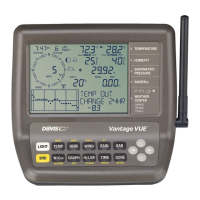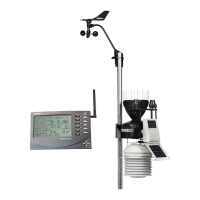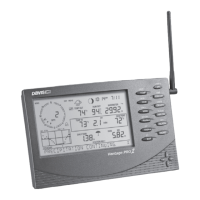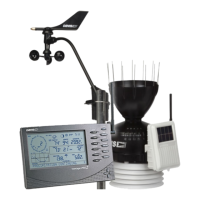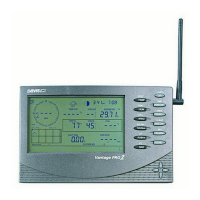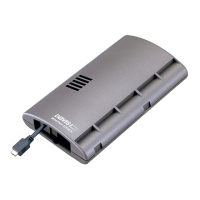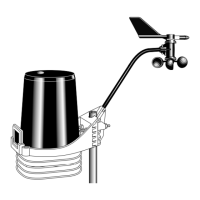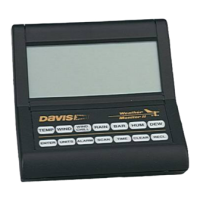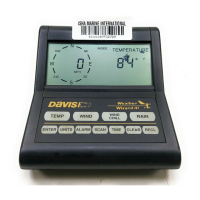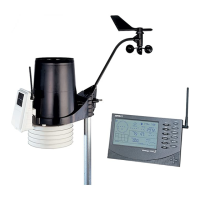21
Appendix A: Weather Data
Refer to this appendix to learn more about the weather variables
measured and/or calculated by the Weather Envoy, by the Vantage Pro2
Integrated Sensor Suite (ISS), and by the optional Vantage Pro2 sensors.
Each section includes a brief discussion of the weather condition and a
listing of the various ways in which the unit displays or stores that
condition.
Note: Some of the weather conditions require an optional sensor in order to measure or
calculate a value.
Wind
The anemometer measures wind speed and wind direction and is part of
the Integrated Sensor Suite (ISS).
Temperature
The Weather Envoy uses the ISS temperature sensor to measure the
outside air temperature. A second temperature sensor in the Weather
Envoy measures the inside air temperature. The Envoy’s inside
temperature sensor can be replaced with an external temperature probe.
You may use the probe to measure any other temperatures that are within
the sensor’s range, including the temperature of liquids such as water.
Apparent Temperatures
The Weather Envoy calculates four apparent temperature readings: wind
chill, heat index, the temperature/humidity/wind index (THW Index), and
the temperature/humidity/solar radiation/wind index (THSW Index).
Wind chill
Wind chill takes into account how the speed of the wind affects our
perception of the air temperature. Our bodies warm the surrounding air
molecules by transferring heat from the skin. If there’s no air movement,
this insulating layer of warm air molecules stays next to the body and
offers some protection from cooler air molecules. However, wind sweeps
that warm air surrounding the body away. The faster the wind blows, the
faster heat is carried away and the colder you feel. Wind has a warming
effect at higher temperatures
Note: Wind chill is not calculated above 92° F (33° C).
Wind chill is not stored in archive memory. Wind chill is calculated
whenever it is displayed. Editing temperature or wind speed values
changes the wind chill value.
Note: WeatherLink versions 5.1 and later use the Osczevski (1995) equation to calculate
wind chill. This is the adopted method used by the US National Weather Service.

